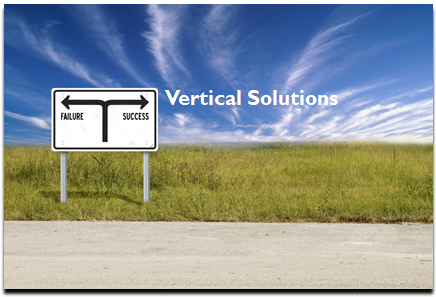
The following is a guest post by Linda Holroyd, CEO and Founder of FountainBlue.
Read this blog’s related posts on product marketing.
Introduction
Back in the day when Sun workstations sold like hotcakes and everyone was waiting with bated breath for Windows 95 (98, 2000), product marketing managers for technology products were well respected for what they did:
Define and drive the product development cycle in collaboration with marketing, sales and engineering.
This is not so long ago, but times have changed to the point where products are becoming more commoditized, where software solutions are in the cloud, where services rein over products, and where even companies like Microsoft are looking at how to provide customized services to their network of customers.
Product Marketing for Service-Oriented Solutions
What does this mean for today’s product marketing managers, who are focusing more on service-oriented solutions? We interviewed Dr. Juan P. Montermoso, President at Montermoso Associates and Professor of Practice in Marketing at Santa Clara University, who spoke at the October 3 SVPMA event titled “Marketing the Experience: Applying PM Concepts to Services and Events.”
The program description notes that more than 70% of GDP in places like the United States, the Netherlands or Australia is service-based, while 60% of revenues for companies like IBM are attributable to services. For tech product managers and CMOs of tech products and services companies, the message is clear: designing, marketing, and delivering not just profitable services but memorable experiences will be the keys to success.
10 Tips for Marketing Services
Here are the top ten keys for doing just this. Product marketing a service has the same fundamental qualities as marketing a product: its focus on products, pricing, and promotion.
- Know your product details, market segment and your customer niche, and communicate your offerings based on the needs of your customers.
- Your promotion and pricing should speak to the needs of the customer and your product offerings should be designed to serve their needs, not the other way around.
- Continually seek feedback from the customer about the value of what you are providing and get their input about how to make it better for them. It is essential to gather this feedback to refine product features and definitions, pricing strategies, promotional plans.
- Create a community for your clients, partners and other stakeholders and provide value-added information, connection and services to them. This is an efficient way to build deeper relationships, connect with your customers, and add value beyond your current offerings.
- Work in conjunction with the marketing, sales, engineering and management team to address the needs of the customer, for knowing what the customer wants, in isolation of what a company will deliver is only half the solution. The new way users are selecting products and services is no longer about the sales process and funnel, but has evolved into a complex, multi-faceted, multi-directional stages of evaluation, consideration, advocation, experiencing and buying, as well as bonding with others throughout the process. (See McKinsey Quarterly Report article’ The funnel is dead. The new consumer decision journey,’ http://www.mckinseyquarterly.com/The_consumer_decision_journey_2373). So as we evolve into the marketing of services, and address the decision processes for the more empowered user, we must still consider the products, price and promotion, but also look further into the overall user experience:, the process, physical environment and people who impact the users and the choices they make.
- The experience a user undergoes to evaluate, adopt, advocate, endorse, recommend a service must be seamless and elegant, and should be easy to communicate to friends and groups. And collaboration between marketing, sales, management and engineering is even more important to deliver this experience.
- There must be an efficient process for customers to easily adjust and communicate parameters and requirements, as well as a process and methodology for providers to efficiently and sustainably deliver these customized services.
- Bonding is now an element of the decision-making process, so it is more important to identify and speak to the needs of niche customer groups as well as individual customers, and creating and leveraging social media and community development and support abilities will be more important as you do so.
- Content matters. Service marketing must communicate the core technology offering, as well as the range of customized adaptations of what you could do with the core technology, and speak in a vocabulary and voice a customer will understand. And this must hold true for each niche audience.
- Social media solutions will be an integral part of success service marketing efforts. Leaders in this space such as LinkedIn, Facebook and Twitter are strategizing on how to create and support niche communities of many different colors and stripes, and creating a value to these individuals and companies, a value worth charging for. Product/service marketing professionals would benefit from following what’s happening with these social media leaders as they consider the privacy, policy, outreach, integration and other challenges and opportunities for creating and developing these niche audiences.
Conclusion
Regardless of where you are in the product/service continuum, product marketing will continue to play an essential role in the success of any tech company. I invite you to share your thoughts in the Comments section below. You may also contact FountainBlue via email.
About Linda Holroyd
As CEO and founder of FountainBlue, Linda and her team produces in-person events and writes and speaks on market, technology and leadership trends. Linda also serves as a start-up adviser to Silicon-Valley-based high tech companies focused on delivering personalized services to clients worldwide.
Previously, Linda was co-founder and CEO for Galatia, a high-tech, service-oriented web consultancy in the emerging internet field, where she oversaw the development of dynamically-generated web sites in the financial services, government, high tech, and academic industries.
Prior to that, she engaged in similar marketing, alliance, operational and sales roles in three emerging start-ups in the document imaging, file security and web development space. Two of the start-ups were purchased and one of them is still running. Linda is a graduate of UC Davis with a major in Psychology and a minor in Education, and earned certificates in nonprofit management, executive management and program management through UCSC Extension and San Jose State.
She serves on the advisory boards for VLAB, WITI and WCA, as well as her client companies.




 Posted by Dennis Shiao
Posted by Dennis Shiao 














